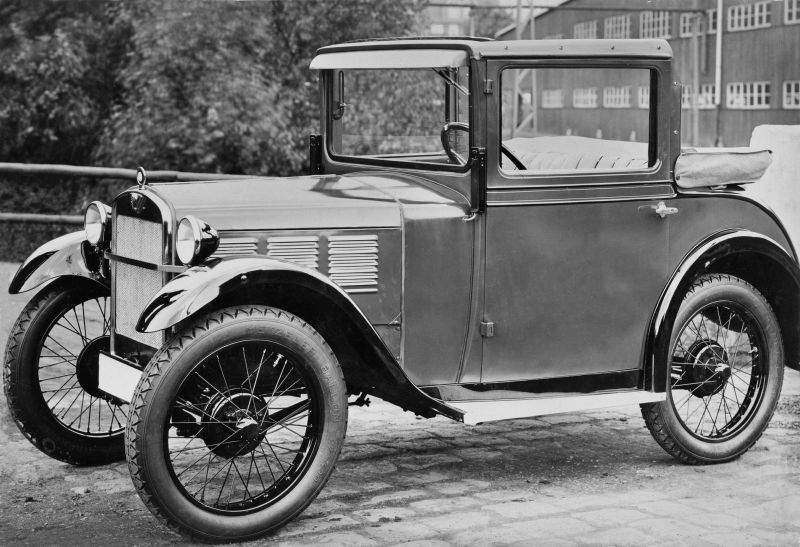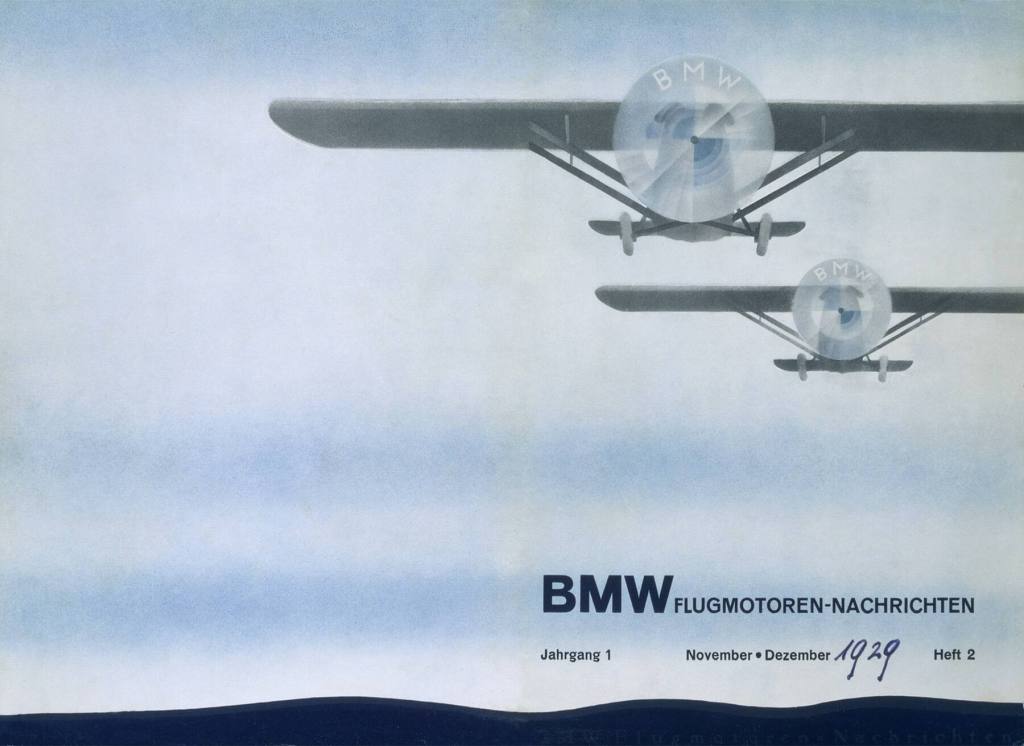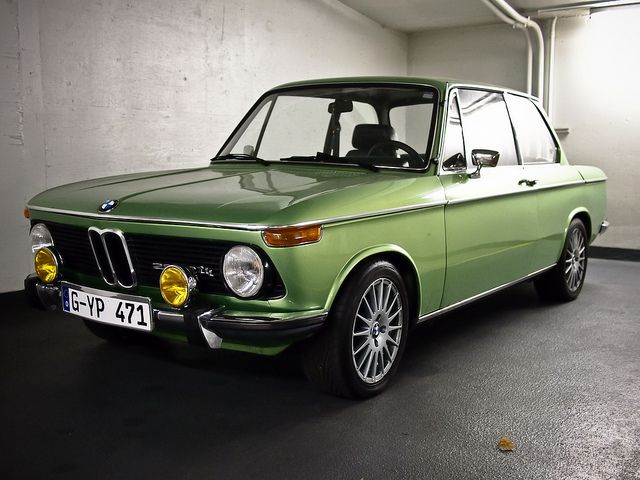The BMW is one of the pride and joy of the German auto industry, the brand is well known around the world for stylish cars and cutting edge technology applied to them, but before becoming one of the most desirable automobiles in the market, BMW had its fair share of bumpy roads.
The origin.
The BMW name stands for Bayerische Motoren Werke GmbH or Bavarian Motor Work in English. The roots of the modern BMW goes back to 1913 from the Munich firm Rapp-Motorenwerke, then this company was incorporated to the Bayerische Flugzeugwerke AG in 1916, after that, there was another restructuring process that brought the company to be incorporated into Knorr-Bremse AG in 1920 before being finally renamed BMW AG in 1922. A bit complicated? You bet, after all the company changed its name 4 times in less than 10 years, a clear indication that the founders had either little money in their pockets or their product had a very limited market acceptance or both, in BMW’s case.

BMW was born to produce aircraft engines and at this point, it seems the company had finally hit the jackpot, Germany was deeply involved in World War I (1914-1918) and the demand for this kind of engine was at its peak. The company’s very first product was the BMW IIIa, an in-line 6 cylinder, water-cooled, 230 HP engine.

The IIIa was a superb engine, designed by engineer Max Friz. Production started in the spring of 1917 and it was the chosen engine to power the Fokker D.VII, one of the finest German fighters of the war.
The profitable marriage between BMW and the Luftwaffe was short-lived, in November 1918 Germany capitulated to the Allies and all contracts with the government were cancelled. In the years that followed the end of the war, Germany dived into an unspeakable economic depression and BMW had to find ways to produce more useful products than engines for military airplanes.
For a while, the company managed to stay afloat mainly producing brake components for trains and even steel office furniture.

It was only in 1923 that BMW released its first motorcycle, the R33. The bike was a good seller, considering the hard times Germany was facing, in total 3,090 units were sold between 1923 and 1926. The R32 was equipped with a 494cc flat-twin that was good for 8.5 horsepower. Speedometers were optional but you didn’t even get a choice with the front brake, at least in the first year of production.

Showing that BMW holds dear its traditions, the twin boxer engine and the drive shaft transmission from the R33 can still be found in modern BMW motorcycles, like the 2021 R18.
The British roots.

After some success building motorcycles, by the end of the 1920s, BMW decided to venture into the automobile field. Since the company had zero expertise in this enterprise, they found a smart shortcut: in 1928 BMW acquired Fahrzeugfabrik Eisenach, the third-largest German automobile manufacturer at the time. This company had a license from the British automaker Austin Motor Company to build the Austin Seven in Germany. Instead of spending some time developing their own car, BMW immediately slapped their logo on the cars being built by the acquired company.
Officially, the 1928 BMW 3/15 was the very first car produced by BMW, even if it was nothing more than a rebadged Austin Seven.
In 1932, BMW unveiled the 3/20, an updated version of the 3/15. It is pretty noticeable the new car still holds a strong resemblance to the 3/15, but the new model was entirely developed by the BMW engineering team.

The tinny 3/20 was offered in many different models: 4 doors sedan, 2 doors coupe, roadster, convertible, and even panel van. It was powered by an 800cc, 20HP, 4 cylinder engine.
Interesting fact, since BMW didn’t have the means to provide the tooling for the new car, Mercedes-Benz was hired to produce all the body panels for the 3/20.
The controversial BMW logo.

There is a theory about the meaning of the BMW logo that is widely accepted among the gearheads around the world, it goes like this: since the original BMW business was aircraft engine, the circular emblem with different colours in the opposite quadrants represents the blurred image of a spinning aircraft propeller. This rather interesting story has been around since 1929 when BMW starts advertising its new aircraft engine, using the illustration you see above. In a time when the German industry was still strictly forbidden to produce any aircraft-related stuff, BMW was allowed to build this engine in a partnership with the American company Pratt & Whitney.
In 1942 a similar advertisement was run in magazines, and that helped to seal the myth over the years. The real meaning of the logo couldn’t be more simple, the circumference divided in four quadrants is a very common sight in any technical drawing and the blue and white is a tribute to the national colours of Bavaria.

Throughout most of the 1930s BMW seemed to have found the right path, the company had a nice lineup of cars, motorcycles and aircraft engines.

Probably the most iconic BMW from the 1930s is the 328, the car that started the company’s long tradition in the sports car arena. With 328 the BMW racing team won in its class the 1939 edition of Le Mans.
The War Efforts
The triumph in Le Mans happened on June 18th, 1939; on September 1st, of the same year Germany invaded Poland, starting World War II and once again BMW would be dragged into the dirty business of war.
BMW had 100% of its industrial capacity shifted to help the Nazi war effort, the production of aircraft engines was at full steam, so was the motorcycle assembly line but the automobile production was cut altogether.

Quite a few different models of airplanes were equipped with BMW engines but the one that the allied pilots feared the most was the Focke-Wulf FW190, considered the best Nazi fighter of WWII. The airplane was powered by the BMW 801, an air-cooled, 41.8 liter, 14 cylinder radial engine, able to produce 2,000 HP, more than enough to pull the fighter to a top speed of almost 700Km/h.

It was the most produced radial engine of Germany in World War II with more than 61,000 built. Being such a powerhouse to the Nazi war machine, the BMW facilities were a prized target for allied bombers, at the end of the war there was not much left of the original factories.
The post-war
Right after the surrender, the Allies took control of every aspect of German society and BMW was banned from producing motor vehicles, at least for a while. The company survived making pots and pans, and later on, bicycles.

In 1948 BMW resumed the motorcycle production and finally, in 1952 they unveiled their first automobile since the beginning of the war, in 1939, the 501. The car was also the first luxury-oriented model of the brand.

In 1955 BMW acquired the license to produce the interesting Isetta, an Italian microcar with a futurist design. The car has no side doors; instead, the whole front facia opens to give access to the interior of the vehicle.

The BMW produced 3 different versions of the Isetta, the 250, the 300 and the four-seater 600. The code names are related to the size of their engines: 250cc, 300cc (mono cylinder), and 600cc (flat twin) ranging from 10HP to 24HP.
The idea of producing the 501, a luxury model, in a country still struggling with the hardships of post-war, wasn’t a wise one, the car never was a good seller. The affordable Isetta helped to keep the company afloat for a while but in 1959, the rival Mercedes-Benz came real close to acquire BMW.
The company was saved from extinction by the two German industrialists, Herbert and Harald Quandt, who dumped a truckload of money into the company. It didn’t take too long to prove it was a clever investment.
Conclusion.

It is safe to say that BMW only found its way in the 1960s, first with the 700, the car that has the credit of saving the company and then with the 2002, the BMW’s first worldwide success.

Those cars are well built, with superb handling and decent performance, all the qualities and character that won the hearts and minds of fans all over the world.
Nowadays, when looking at any magnificent BMW dealership, with all those beautiful cars, it is hard to believe all the challenges the company overcame in the past; a true sign of determination and resilience.

Very interesting. I didn’t know BMW had such a hard go of it for so long. I’m impressed with all your research you do for your articles.
LikeLiked by 1 person
Thanks Glenn. I usually write about stuff I have some knowledge but the more I research about it, the more I realize that what I actually know is just a drop in the bucket.
LikeLike